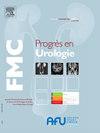Step by step : de la consultation à l’urétéroscopie pour calcul, comment je prépare mon intervention ?
Q4 Medicine
引用次数: 0
Abstract
L’objectif de cet article est de reprendre les points clés de la préparation d’une urétéroscopie de façon à en limiter au maximum les risques à l’aide de la littérature. Pour cela deux points importants : la consultation préopératoire avec le contexte, l’imagerie, la mesure du volume du calcul, l’explication détaillée de la procédure au patient et la fiche AFU. Remettre au patient un bilan sanguin si pas de fonction rénale connue et un ECBU à réaliser 8 à 10 jours avant. Enfin préparer la procédure : position du patient, laser disponible et réglages. Une procédure bien préparée permet un déroulement le plus sûr possible pour le patient.
We aimed to review the key points of preparing for ureteroscopy in order to minimize risks as much as possible using the literature. To do so, two important aspects are highlighted: the preoperative consultation, which includes the patient's medical background, imaging, stone volume measurement, detailed explanation of the procedure to the patient, and the AFU form. A blood test should be provided to the patient if renal function is not known, as well as a urine culture (ECBU) to be performed 8 to 10 days prior to the procedure. Finally, preparation for the procedure itself is crucial: patient positioning, available laser, and laser settings. A well-prepared procedure ensures the safest possible outcome for the patient.
一步一步:从咨询到输尿管检查再到计算,我如何准备我的手术?
本文的目的是在文献的帮助下,回顾准备尿道镜的要点,以最大限度地减少其风险。为此,有两个重要的要点:术前咨询与上下文,成像,测量体积计算,向患者详细解释程序和AFU文件。如果没有已知的肾功能,应提前8 - 10天进行血液检查,并进行ECBU。最后,准备程序:病人的位置,可用的激光和调整。一个精心准备的程序为病人提供了最安全的过程。我们的目标是回顾输尿管镜准备的关键点,以最大限度地利用文献将风险降至最低。为此,需要强调两个重要方面:术前咨询,包括患者的医疗背景、成像、石量测量、向患者详细解释手术过程,以及AFU表格。如果不知道肾功能,应提供血液测试,并在手术前8 - 10天进行尿培养(ECBU)。最后,手术本身的准备是至关重要的:病人的位置,可用的激光,和激光设置。一个准备充分的程序保证了患者可能的最安全的结果。
本文章由计算机程序翻译,如有差异,请以英文原文为准。
求助全文
约1分钟内获得全文
求助全文

 求助内容:
求助内容: 应助结果提醒方式:
应助结果提醒方式:


